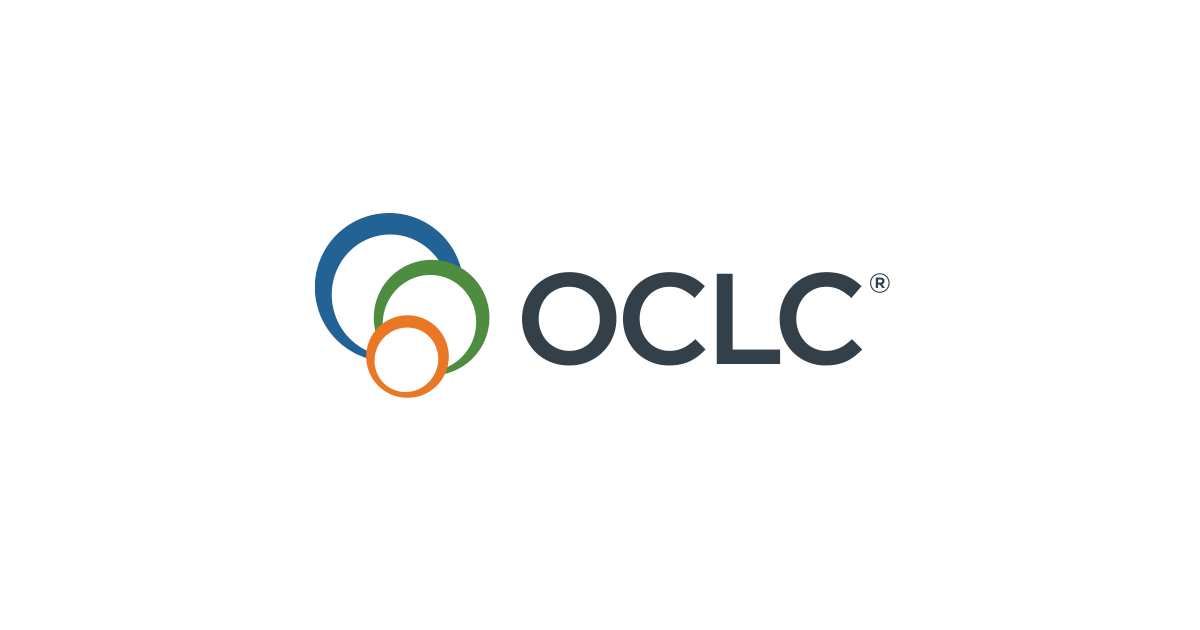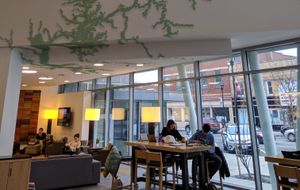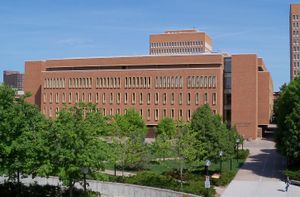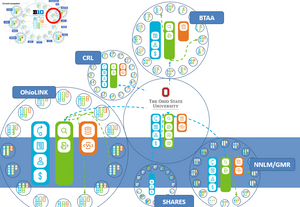- The powers of library consortia 1: How consortia scale capacity, learning, innovation and influence
- The powers of library consortia 2: Soft power and purposeful mobilization: scaling learning and innovation
- The powers of library consortia 3: Scaling influence and capacity
- The powers of library consortia 4: Scoping, sourcing and scaling
They are now more important than ever as libraries seek to increase impact and efficiency by working together and as issues of value and values come to the fore in changing service, funding and political contexts.

Scaling capacity
Libraries and related organizations group together to scale capacities such as infrastructure, expertise or services. Motivations are to achieve economies of scale (through shared systems infrastructure, for example), or to increase impact (through an aggregate discovery service, for example), or to concentrate expertise and resources (through negotiation services, or training provision, for example). Think of the following which occur in various combinations.
- There are many library and educational organizations whose primary purpose is to combine purchasing power and to negotiate and license on behalf of a group. Examples here would be CRKN in Canada, Jisc Collections in the UK or NERL in the US. This is a core competence of such groups and may be leveraged more broadly on occasion. For example, OhioLINK is working on textbook licensing with the Ohio Department of Education.
- It often makes sense to share infrastructure across groups of libraries. Think of the ILS in Orbis Cascade Alliance or PALNI, for example. Or the way HathiTrust or CRL concentrate the infrastructure required to manage digitized and print collections respectively. Or the national/regional bibliographic infrastructure organizations that provide union catalog, resource sharing and other services in many parts of the world (Bibsys in Norway, for example, or ABES, DBC, and IZUM in France, Denmark and Slovenia respectively). Or how the Digital Preservation Network – and its participant nodes – aims to create shared distributed preservation infrastructure in the US. Or how the California Digital Library or The Scholar’s Portal provide a range of infrastructure services to the University of California and Ontario academic libraries, respectively. The nature of infrastructure provision evolves as library services evolve. So, for example, various consortia are now looking at shared provision of research support services (research data management, institutional repository, scholarly publishing, and so on).
- We are seeing greater consolidation of collections or data. HathiTrust, just mentioned, is an interesting example, where a centralized, network-level resource is now seen to make sense for many reasons. We are beginning to see greater concentration of print collections also, as collective stores emerge (Recap or UKRR for example), and as individual libraries manage down their collections. CRL has long been active in this area. In response to this trend, some existing consortia have developed shared print programs (e.g. BTAA) while some new ones have also been formed to address the issue (e.g. West). In some cases we are beginning to see consortia move to more formal shared arrangements to jointly manage their ‘collective collections.’ Research data management also provides interesting group examples where universities are thinking about where best to manage data, and we see consortial (e.g. 4tu.datacentre in the Netherlands) and national responses (e.g. CARL Portage in Canada, ANDS in Australia, or DANS in the Netherlands). Of course, the journal literature has been consolidated for a while, and lends itself to provision by a small number of third party providers (publishers, aggregators). That said, some library organizations continue to locally load data where it aligns with a local mission of access or ownership. OhioLINK is an example.
- Discovery naturally moves to the network level. We are now familiar with large gravitational hubs which aggregate audiences for discovery – Google, Google Scholar, ResearchGate, and so on. Similarly, DPLA or WorldCat scale discovery to the network level in the library community. Discovery is also important at the consortial level, where an organization like OhioLINK or BTAA aggregates both discovery and fulfilment within their domain. And over the next few years we will see the further evolution of discovery to delivery networks which progressively streamline the logistics of moving library materials between shared and local nodes of the relevant collective collection, informed by richer decision support systems. Libraries Australia, Sabinet in South Africa, the Ivies Plus group, and JULAC provide additional examples. Of special interest here is the shift from discovery to discoverability. In an environment where discovery increasingly happens elsewhere (in Google, Google Scholar, Wikipedia, ResearchGate, and so on), libraries become more interested in effectively disclosing their resources to network services, to making them more discoverable. Services like DPLA and WorldCat.org play a role here, as do other aggregation services.
- Expertise is an important shared resource, and consortia are useful mechanisms for shared acquisition of scarce expertise, for sharing expertise across members, or for concentrating expertise around particular consortial activities.
- Consortia may provide various other services where it does not make sense for all members to individually and redundantly develop their own capacity – copyright clearance, accessibility assessment, and so on, depending on local circumstances and scale.
Of course, it is usual for many organizations, including some mentioned above, to work across multiple areas. The Scholars Portal is an especially interesting provider of multiple shared services (digital storage, inter library lending, negotiation/licensing, local loading of content, research data management, and others) to members of OCUL (Ontario Council of University Libraries). OCLC scales capacity in important ways for the library community. It has created networks which allow thousands of libraries to collaborate at scale to catalog materials, to share collections, and to make those collections more discoverable.
At a more broadly educational level, an organization like Internet 2 scales shared capacity to the national level, with an explicit mission of managing infrastructure so that individual researchers and institutions do not have to.
Scaling capacity is difficult. The coordination costs are high – between libraries and between groups and their providers. Personalities and politics are at play in any collaborative activity. For many organizations there is a learning curve as they build capacity. Once in place, it may be difficult to create economies of scale, to generate investment for infrastructure development, to sustain the service. And one can point to examples where services have not continued.
Where there is a sustained need, and where coordination costs go down, third party providers may step in to run the service. However, such transitions are also difficult. In fact, the sourcing question is a central one for groups. Should they build a service or contract with a third party to provide it? Some consortia have local development capacity and may consider building shared services themselves (see the Scholars’ Portal services provided by OCUL, for example). Others do not have this capacity but do have an active role in negotiating and contracting for services with third parties. Of course, each approach may be pursued side by side.
However achieved, scaling capacity is crucial. It does not make sense for individual libraries to locally develop all the capacity they need. That said, there is no consistent pattern: libraries are variably inserted in collaborative arrangements, and the number and quality of those arrangements are always being reviewed.
These issues make the discussion of sourcing and rightscaling central, and I return to this in the fourth blog entry in this series.
Scaling influence
Many library groups have an advocacy or representative role.
Those that represent the professional interests of individual members (e.g. ALA, Lianza) typically exist at national or other jurisdictional levels, and often play a leading advocacy role in lobbying government organizations on behalf of library interests and those of their users. Given their individual membership model, we do not usually think of these groups as consortia. However, their interests do overlap with those collaborative organizations who represent the institutional interests of certain types of library (e.g. ARL, ULC, LIBER or RLUK). Again, these typically exist at national or other jurisdictional level and the public policy interest is central. These organizations certainly have consortial characteristics, pulling together library members, and their activities sometimes overlap with more service-oriented consortia.
A collaborative group may also exist to exert influence within a particular topic. SPARC is a notable example here, seeking to aggregate the influence of members around open access issues. COAR is another example, advocating on behalf of the repository community and open access.
Scaling influence may be especially important in an emerging area where service or policy norms are lacking or where existing norms may be challenged. This was important for HathiTrust in its early days, for example, as it explored what was possible in the copyright environment. The Open Text Network provides an interesting current example.
Of course, these organizations also engage in other activities – some provide shared infrastructure or negotiation services. The extent to which they scale capacity in this way, taking on operational services, is an interesting scoping question to which I return in the next post. Many have a strong role in mobilizing their networks around scaling learning and innovation. In fact, such mobilization is probably key to success for those organizations that persist.
The emphasis on scaling influence has become much stronger in recent years, as libraries focus on value and values, on positioning and taking positions, in a contested environment.
Value and positioning. Libraries are embedded in complex and evolving policy, service and funding environments, and are keen to ensure that their actual and potential contribution is recognized. This is especially the case where there is downward pressure on public funding, where there are many players in the network information environment who appear to offer substitute services, and where the practices of research, learning and creative work are diversifying. The role of the library itself is changing, as it engages more strongly and in different ways with the life of its community. This makes it important to clearly communicate the contribution of the library, and to develop strong stories which help refashion the expectations the community has of the library. It also makes it important to develop an evidence base that individual libraries can draw upon. The recent From Awareness to Funding work by PLA and OCLC is a good example here.

Values and taking positions. Libraries are partners and advocates in the creative lives of their communities. They advocate for the interests of those communities, and this means taking a position when potentially conflicting interests are in play – in relation to copyright, for example, to scholarly communication, to net neutrality, to access to public information. They are advocates for the interests of researchers, learners and citizens as creators and consumers of information in a changing environment, for the interests of communities as they preserve their identity and experiences, for the interests of citizens as they access resources for personal development or civic engagement.
Where the value and values of libraries are contested it is critical that the library community scales its influence purposefully and effectively. This prompts an obvious question – is the library community too fragmented here as elsewhere? There are many groups keen to exert influence: when does one organization engage with an issue or leave it to others? How do organizations align their positions? Should there be a leading voice? Would efforts to influence policy be strengthened by groups acting in concert?
Libraries are interested in creating powerful stories about their role and in developing shared evidence and arguments in support of these. This is as they seek both to position the library within their local institutions and to influence public policy and funding agencies.
Library organizations who scale influence have a special responsibility when faced with political, funding and service uncertainty, and in a time of surveillance, algorithmic retrieval and polarized media. They need to be strong advocates for library value and values, and to be effective resources for individual libraries.
Acknowledgements. I am grateful to the following people for generous comments on earlier drafts: Gwen Evans, Mike Furlough, Kevin Guthrie, Susan Haigh, Brian Lavoie, Kirsten Leonard, Rick Lugg, John MacColl, Constance Malpas, Barbara Preece, Judy Ruttenberg, Katherine Skinner, John Wilkin, Nicola Wright. Of course, I alone am responsible for the use to which I have put their advice and they do not necessarily share any of the views expressed here! I presented some of this material at the JULAC 50th Anniversary Conference in Hong Kong, and I benefited from the views outlined in the formal responses of Peter Sidorko and Louise Jones.
Picture: I took the feature picture in the lobby of the The Hotel at Oberlin. The wall art is by the great Maya Lin, who grew up in southeast Ohio. Oberlin College is a member of OhioLINK, which has been a pioneering library consortium. One of the students in the background is reading a book with an OhioLINK wrapper on it.
Note: I made some cosmetic amendments including adding the feature picture and headings on 18 March 2021.





